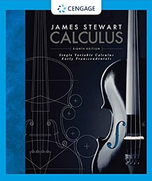Let an S1 1 1 n D n . (a) Show that if 0 < a , b, then bn11 2 an11 b 2 a , sn 1 1dbn (b)
Chapter 11, Problem 90(choose chapter or problem)
Let an S1 1 1 n D n . (a) Show that if 0 < a , b, then bn11 2 an11 b 2 a , sn 1 1dbn (b) Deduce that bn fsn 1 1da 2 nbg , an11 . (c) Use a 1 1 1ysn 1 1d and b 1 1 1yn in part (b) to show that han j is increasing. (d) Use a 1 and b 1 1 1ys2nd in part (b) to show that a2n , 4. (e) Use parts (c) and (d) to show that an , 4 for all n. (f) Use Theorem 12 to show that limn l ` s1 1 1ynd n exists. (The limit is e. See Equation 3.6.6.)
Unfortunately, we don't have that question answered yet. But you can get it answered in just 5 hours by Logging in or Becoming a subscriber.
Becoming a subscriber
Or look for another answer
